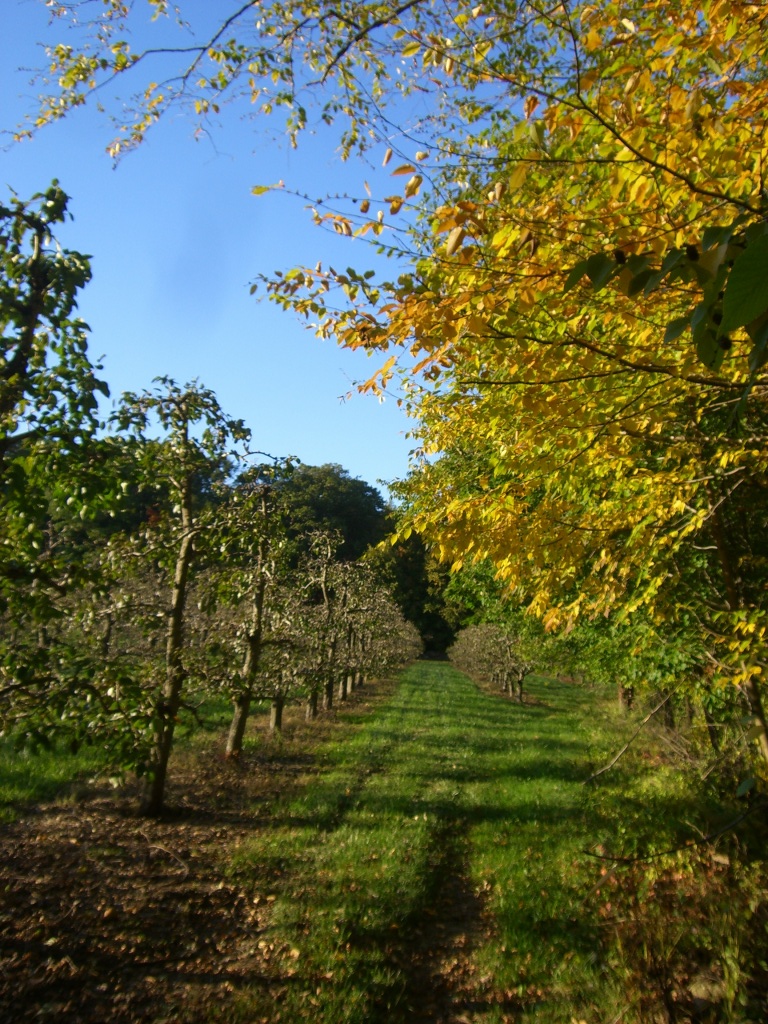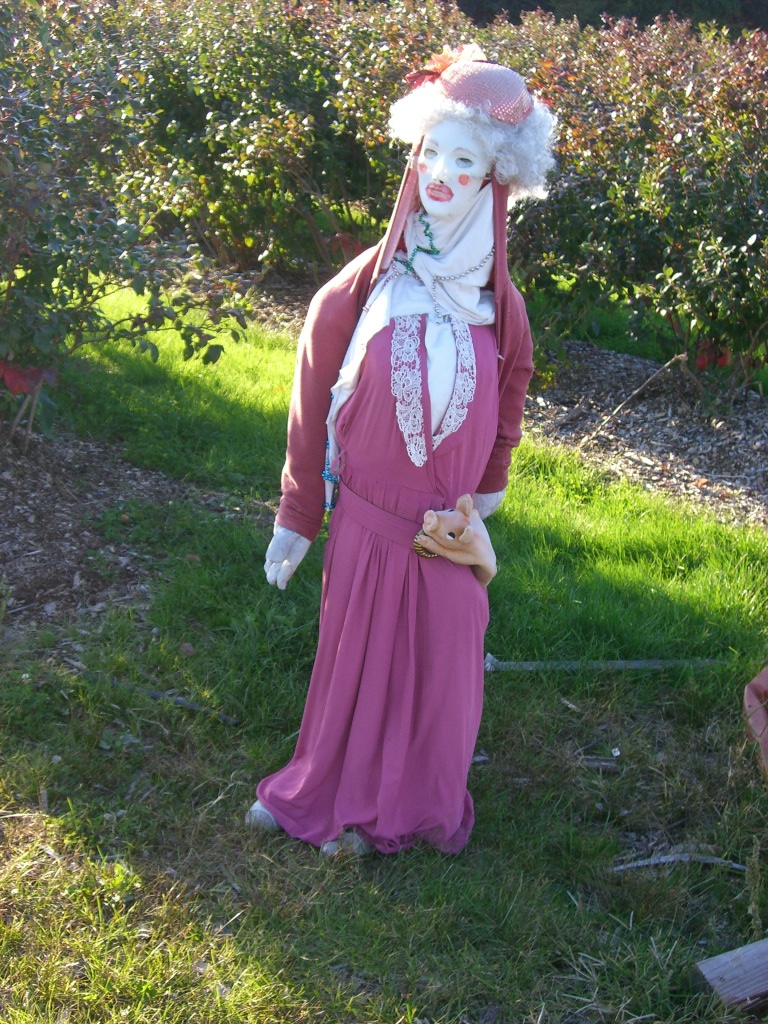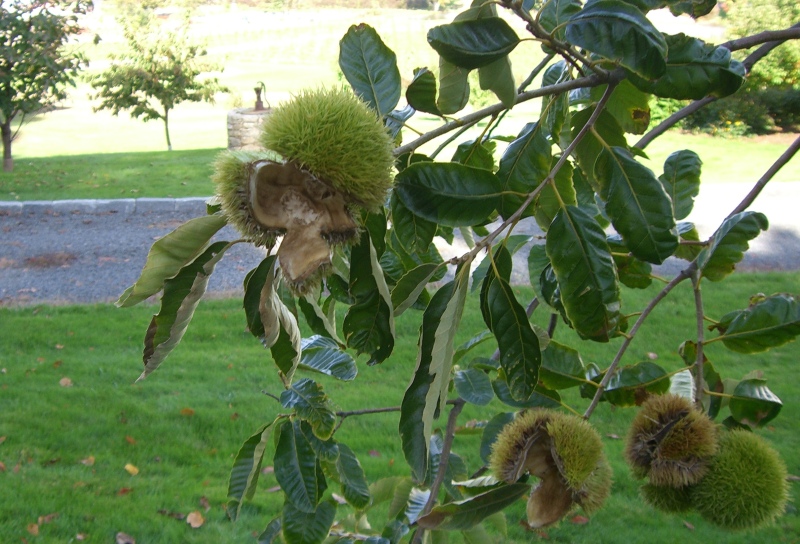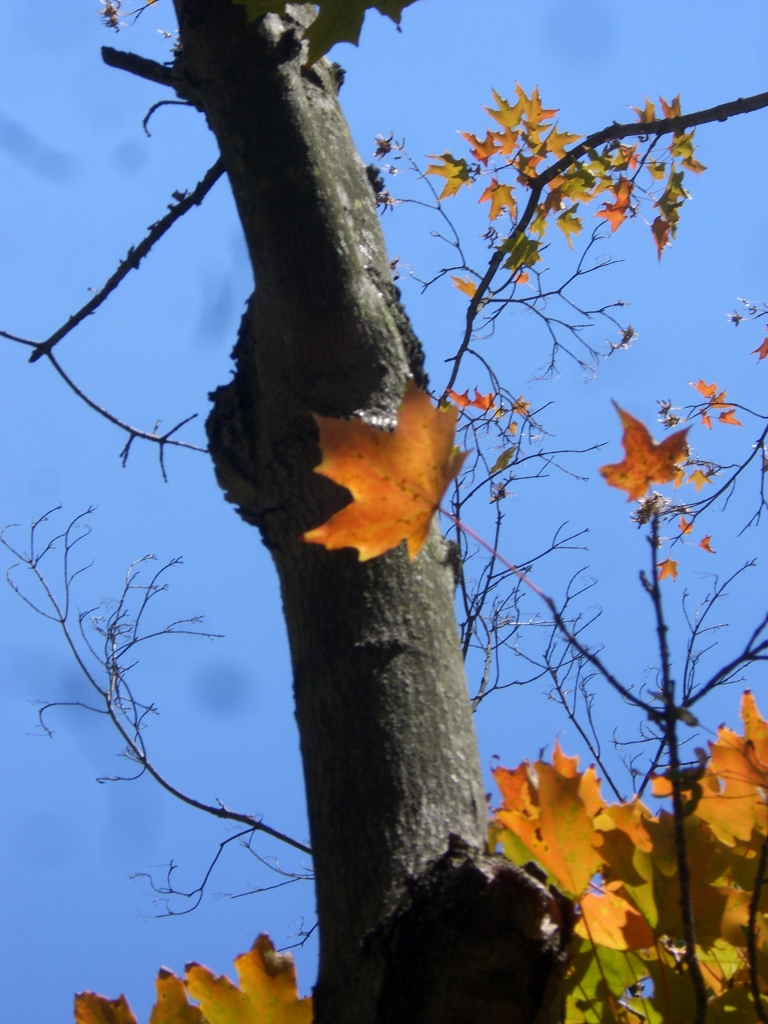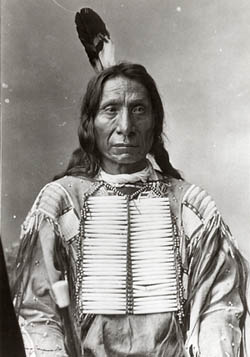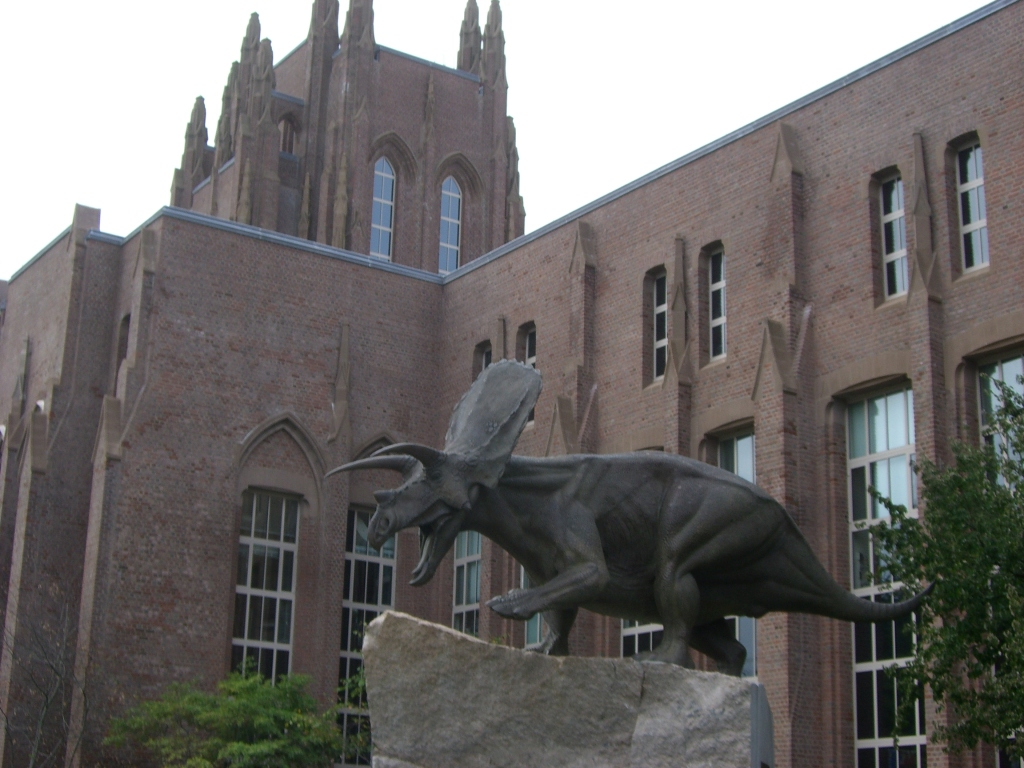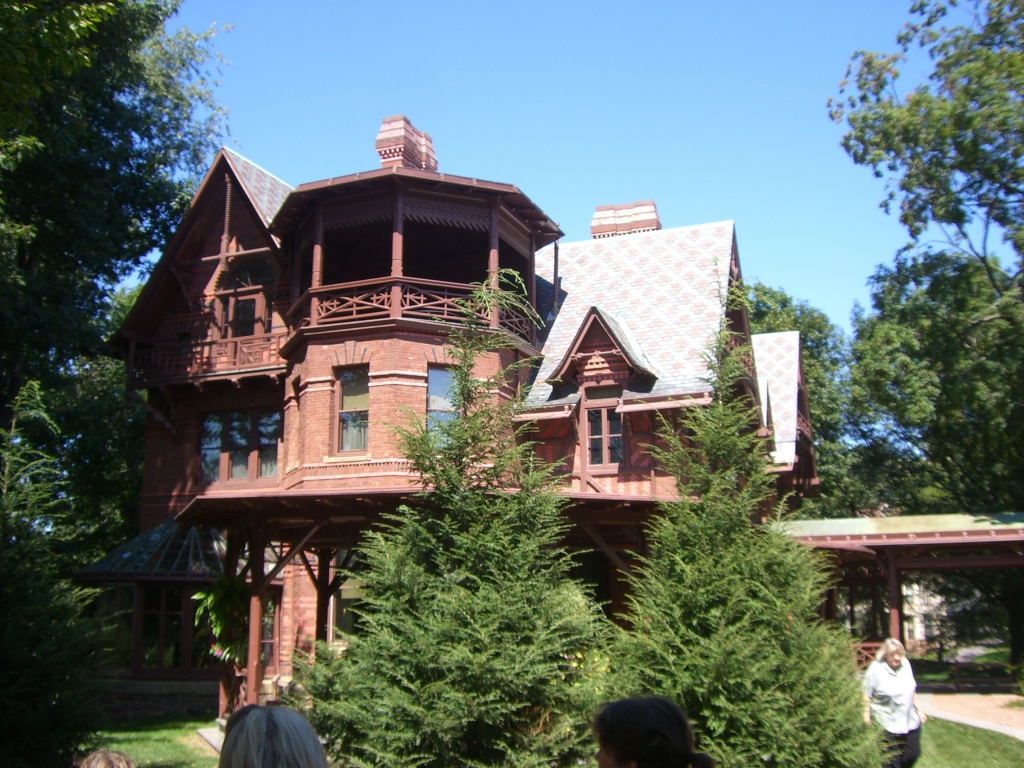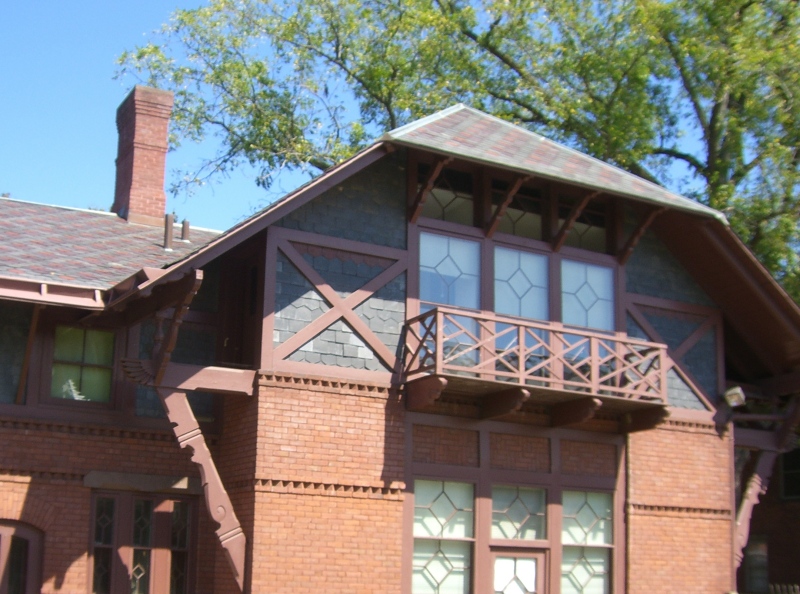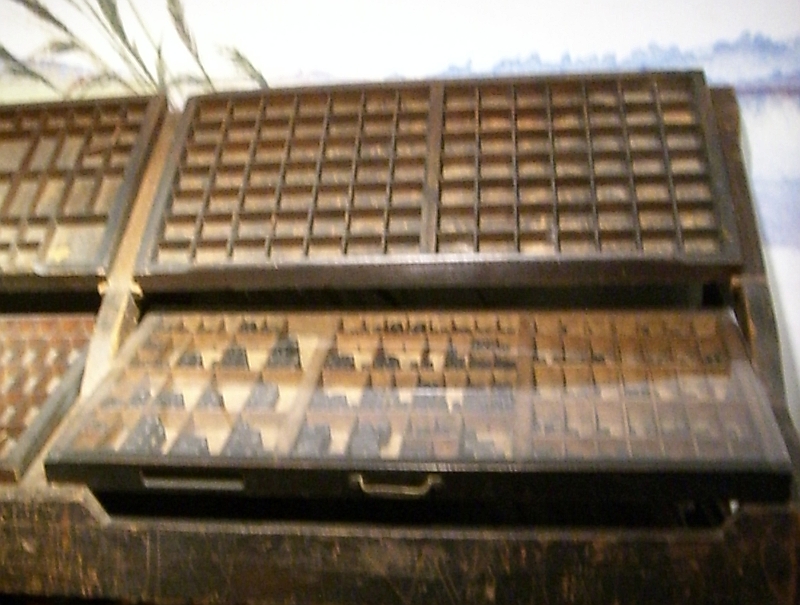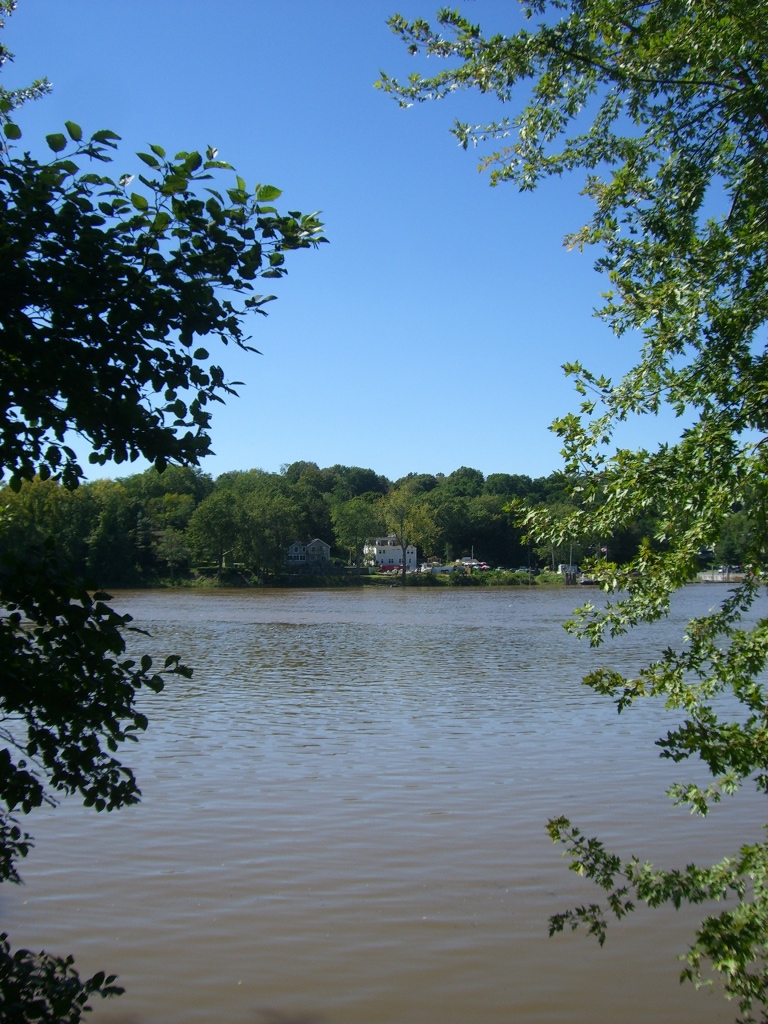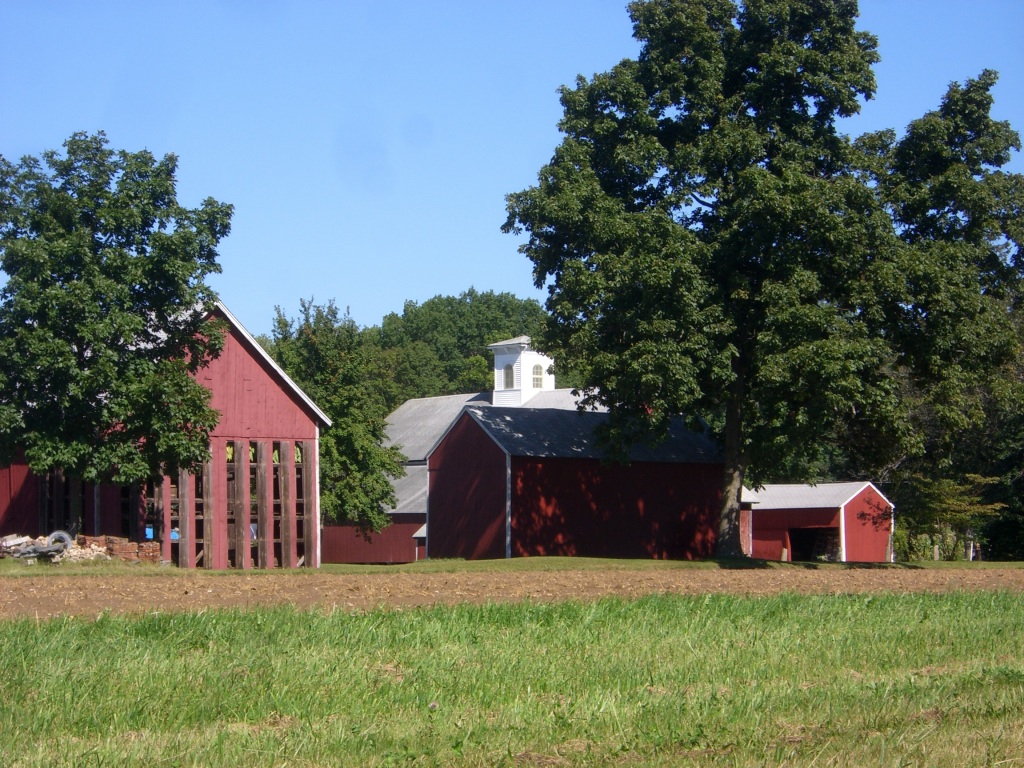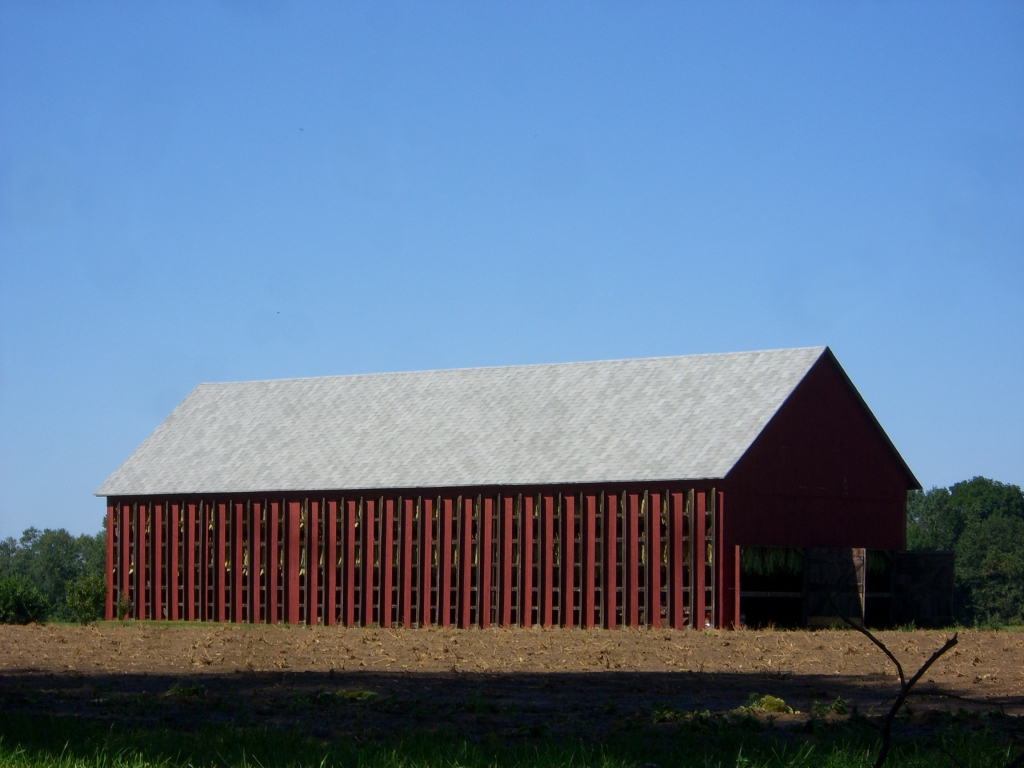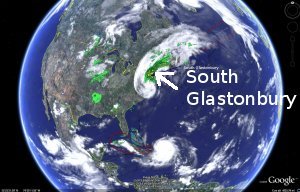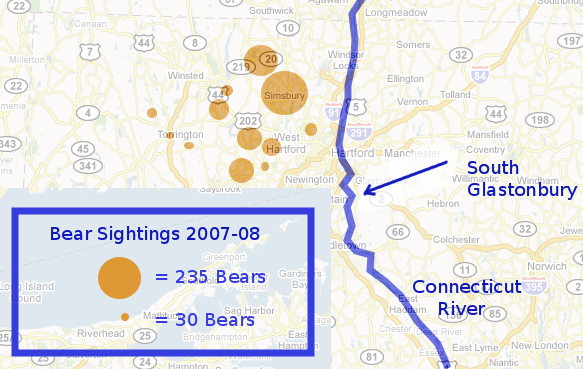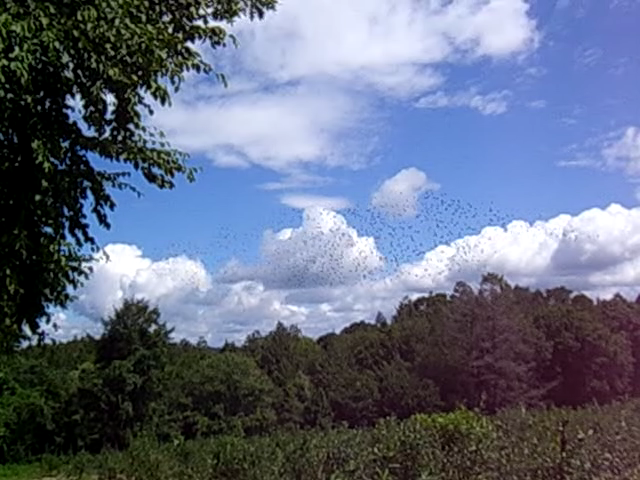If there were any place on the planet that would make a “Morning Person” out of me, it would be here. (Note the telltale subjunctives in that last sentence for future reference). There are chirping birds of all stripes and colors, there are brooks babbling, and the backyard is a verdant forest painted in shades of green that even a color blind person such as myself can see. — Which is a good thing, because this is the only time during the working day when I can get any writing done. Later on the Day Job takes over, and given my obsessive compulsive nature, that activity won’t stop until I am exhausted. And so, for two hours in the morning I sit here at my desk, write in my journal, stare out at the starlings or piping plovers (or whatever those little birds are out there at the moment) get inspired, try to write my 1500 words a day, and then move on to earn the rent money for this house. Morning is therefore the perfect and only time in which I can get anything creative done.
In spite of all this, I am not a morning person. There, I’ve said it.
Not that I have anything against Morning People. In fact, I admire them, aspire to be one of them, and hell, I even married one of them. It did not take me long to realize that Gigi, like many Morning People, has a spring-loaded waking system, in which one minute they are sound asleep, and the next moment they have sprung out of bed as if it was a toaster, now humming and flitting about the house like a song bird, and then on occasion passing by the bed to poke at my inanimate form to see if I am still breathing. I too have a spring-loaded sleep mechanism, but it appears that it only manifests itself on the entry portal to sleep, and not the exit. I can fall asleep moments after my head has hit the pillow, and this after drinking coffee or espresso, even late at night.
But I am slow to wake, and I have found that any attempt to accelerate the process to be painful at best. If for Morning People, waking up is like popping out of a toaster, then for me, the best metaphor I have found is that of swimming through an ocean of cold molasses, far out to sea, the distant shore of the Bright Eyed And Bushy Tailed just past any reachable horizon. Even when with great effort I reach dry land, some vestigial molasses still remains in my ears and brain, gumming up the entire works.
Morning People do not appear to have much sympathy for, or even understanding of the nature of the Slow Riser, to the point of considering their behavior a sign of character flaw. This is much in the same way that extraverts try to claim the high ground over the shy intraverts, and the way in which Men and Women fail to see the other’s perspective at all. This morning, when in a state of particular befuddlement — the Cobwebs in the Brain level — I ran a search on How To Become A Morning Person, and found many articles on the subject. Almost every single one of them written by a notorious morning person type, making the presumptuous assumption that of course everybody wants to be one of them, an affliction not limited solely to Americans and The Beautiful People tribes. The articles all had similar suggestions, such as “stop staying up so late”, and “try to get up the same time each day”, and “find something you like to do in the morning to motivate you to get up.” I have problems with almost all of these suggestions, which would have been obvious to anyone who was not already one of The Chosen.
Let’s take the last suggestion as an illustrative example. Only a morning person finds it self-evident that there could be something, anything, pleasant to do in the morning. Very high on my list of things I Like To Do is to eat Hot Fudge Cake with ice cream on the side. However, if it is early in the morning (which by my definition is any time before noon), my taste buds do not work, my brain feels like it is filled with cotton candy, and I find myself looking out through bleary eyes at the muddled blur of an outside world of which I am only half aware. In that physical and mental state, eating Hot Fudge Cake with ice cream on the side is a complete waste of time and energy, and even a little bit depressing, because I know full well that this is perfectly good Hot Fudge Cake and that it would taste great at about, say, ten pm in the evening with a nice cup of espresso, so why the hell am I eating now when it serves no purpose at all? For a non Morning Person such as me, there is only one pleasant thing to be doing at this hour of the morning, and that is to be back in bed, eyes closed, allowing the dreams of the night gradually fade, and hover in that pleasant semi-conscious state for a few more hours, cocooned in blankets, until the dawning awareness of the outside world begins to creep into view, and (two cups of coffee later), a feeling of being almost awake has appeared, which only becomes fully formed by around lunch time.
I think what most Morning People have not grasped is the possibility that the reason there is a genetic basis for the Slow Riser is that the species has found an evolutionary advantage to keeping on hand a certain percentage of the species with this predilection for slow rising. The morning people must have been the ones to go out and catch the fish, kill the sabre tooth tigers and march on Troy. Those are the CEO’s and the Presidents, the ones that often Do Great Things, and often cause the most trouble. The slow risers tend to be a reflective lot, and indeed many if not most scientist and philosphers get their best ideas in the hypnogogic state, the dreamlike state when ideas can most easily float free. These are your Socrates and Einsteins, the Thinkers who sometimes keep the Do-ers from getting in too much trouble. I believe that they have their uses. It is just that (like the intraverts) they usually don’t win the popularity contests.
I also have an almost scientific hypothesis about the Slow Riser / Morning Person dichotomy, and its genetic basis. In my statistically dubious sampling, I have found that the people I know who are Slow Risers, are also people who thrive in warm weather, and even stay bundled up until the thermometer goes above eighty degrees Fahrenheit. The other crowd, who can sometimes be seen wearing shorts during the winter, seem to process and retain body temperature in a different way from the others. These people I have often found are early risers. So the whole thing may boil down to energy, and how we retain or radiate away heat. If this hypothesis is true, it is easily testable with a set of experiments and interviews.
Hell, if I got up early enough I could write a research proposal for an NSF grant and do the study myself. But for the moment, it’s just started to rain and all I really want to do is to just crawl back in bed and listen to the staccato tapping of raindrops on the window.
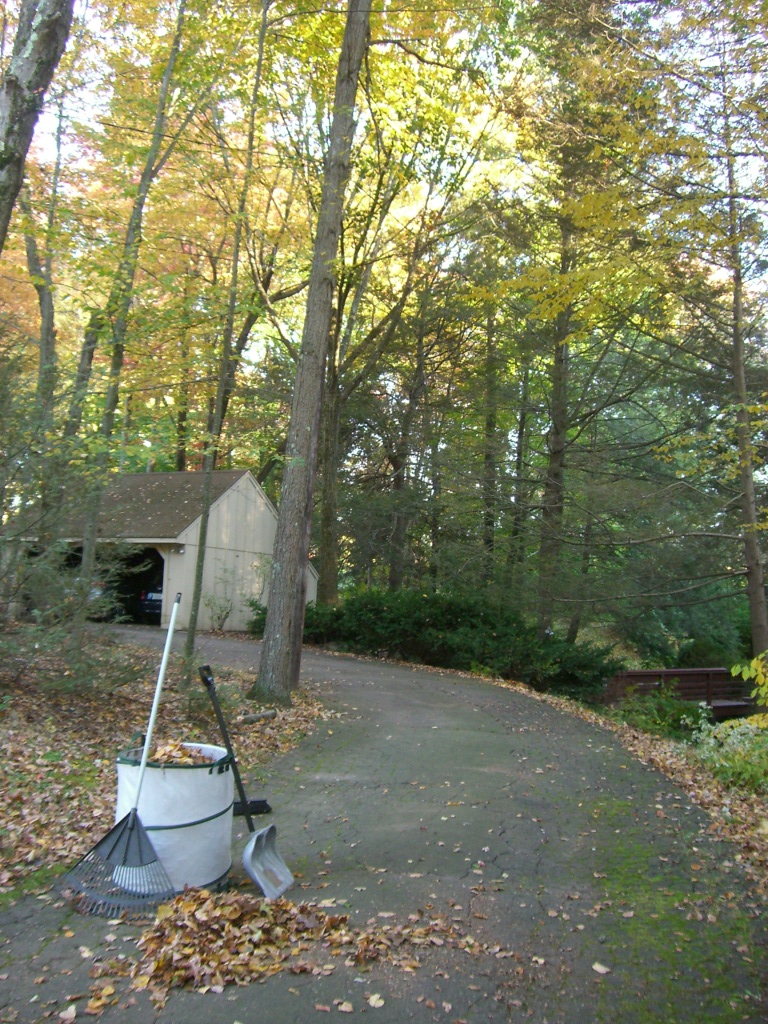 Here we are surrounded with color. The Sugar Maple leaves fill the spectrum between deep magenta, vermillion and dark orange, while the Beech are now lemon yellow. The Oak leaves are only now starting to turn dark red. For someone who did not grow up in this climate, it is surreal, but in a pleasant sort of way, to find 100 foot tall trees in day-glow pumpkin orange, sitting next to a tree the color of red vine liquorice. The colors are now so brilliant that even at night, when your color vision fades and you are driving through near total darkness, all it takes is a single street lamp to bring out the blood-red of a Maple tree.
Here we are surrounded with color. The Sugar Maple leaves fill the spectrum between deep magenta, vermillion and dark orange, while the Beech are now lemon yellow. The Oak leaves are only now starting to turn dark red. For someone who did not grow up in this climate, it is surreal, but in a pleasant sort of way, to find 100 foot tall trees in day-glow pumpkin orange, sitting next to a tree the color of red vine liquorice. The colors are now so brilliant that even at night, when your color vision fades and you are driving through near total darkness, all it takes is a single street lamp to bring out the blood-red of a Maple tree. Our neighbors, Mary and Wes, loaned us a leaf-basket so that I could haul the leaves I had raked up from the front circular driveway to a mulch pile out back. “The Maples and Beech are the first to go,” Wes informed us, “then the Oak leaves drop later.” I was kind of hoping that this one weekend of raking would do the trick, but Wes in true laconic Yankee style just looked up at the trees in our front yard, still full of yellow and red foliage and announced in an accent just this side of Maine, “Be a while yet.”
Our neighbors, Mary and Wes, loaned us a leaf-basket so that I could haul the leaves I had raked up from the front circular driveway to a mulch pile out back. “The Maples and Beech are the first to go,” Wes informed us, “then the Oak leaves drop later.” I was kind of hoping that this one weekend of raking would do the trick, but Wes in true laconic Yankee style just looked up at the trees in our front yard, still full of yellow and red foliage and announced in an accent just this side of Maine, “Be a while yet.”
